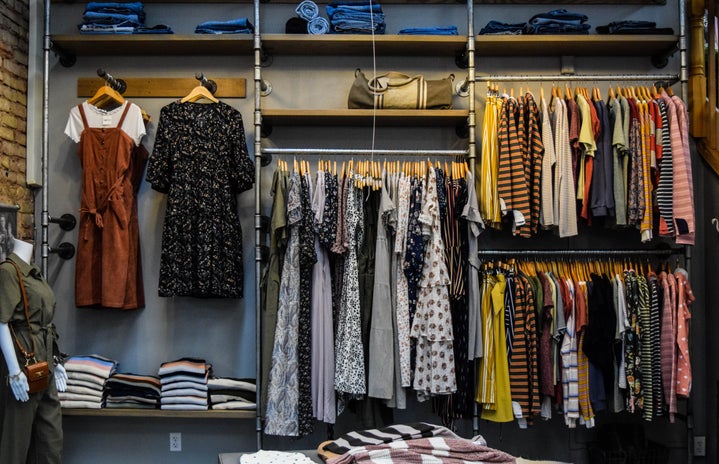In order to create new ways to counteract fast fashion, we must be able to understand what it is. Fast fashion is the mass production of clothing that follows the most recent trends and is cycled through very quickly. While this may be a perk for consumers who want to get their hands on the latest styles for a cheap price, there are many downsides to fast fashion on a global scale.
For one, fast fashion is harmful to the environment. The dyes used in the clothing are toxic and make the industry the second largest water polluter. Generally, the clothes are kept for a short time, only to then be thrown out when the next big trend hits. Furthermore, these clothes are made with cheap materials that cannot be recycled. Some of these clothes end up taking 80 years just to degrade in landfills. In regard to human rights, the factories that produce these clothes are usually in countries with the worst labor laws. In places like China and Bangladesh, children and women are forced to work with little to no pay just so these clothes can reach consumers in developed countries.
Some of the brands that promote fast fashion include Forever21, H&M, Hollister, PacSun, and even Old Navy.
There are many alternatives to fast fashion. One of the more affordable options would be shopping for second-hand clothing on apps like Depop and Poshmark. These companies are working for a sustainable future and keeping items in circulation longer. These apps are online secondhand shops where people sell their clothes. You can also go thrifting or shop at locally-owned boutiques and clothing shops.
There are also sustainable brands like CHNGE, ABLE, Pact, and Afends. These brands are ethical in production, use sustainable materials, and create long-lasting clothes. Although these brands may be a bit expensive, the quality of the clothes is excellent, so you are definitely getting your money’s worth.
The last alternative would be upcycling clothes you already have. If you have something that is out of fashion or you don’t really like, you can make it into something new. You can turn a really old pair of jeans into shorts with just scissors and maybe a little sewing. You can fix a ripped jacket with decorative patches. You can even turn a damaged dress into a shirt or a two-piece set.
Fast fashion is detrimental to our environment and the rights of people laboring overseas. If you cannot afford to shop sustainably, it is ok to shop fast-fashion when needed. If you can afford to do a haul at one of these fast-fashion brands, then you can afford clothes from more sustainable brands.
References
Battered Women’s Support Services. (2019, August 27). The Problem with Fast Fashion – BWSS. Battered Women’s Support Services. Retrieved April 1, 2023, from https://www.bwss.org/fastfashion/
Rauturier, S. (2022, January 31). 22 Fast Fashion Alternatives You Need To Know. Good On You. Retrieved March 30, 2023, from https://goodonyou.eco/fast-fashion-alternatives/


